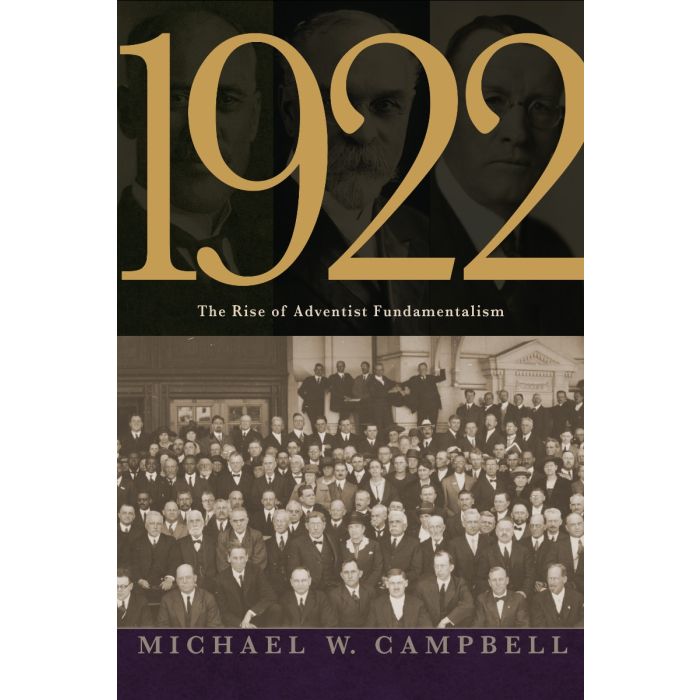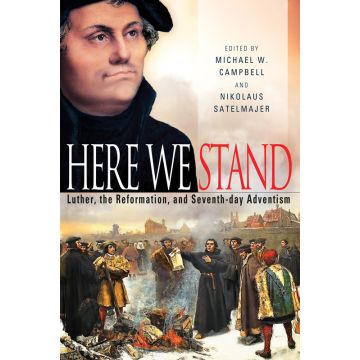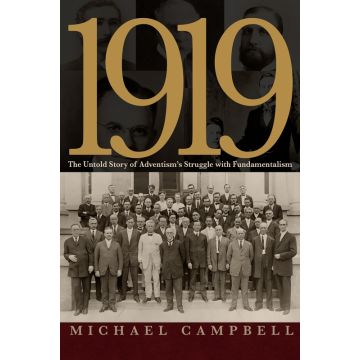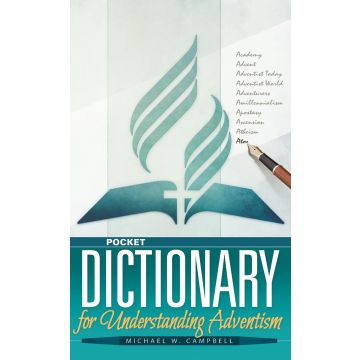1922: The Rise of Adventist Fundamentalism

This product qualifies towards the free shipping offer.
What scholars are saying about this important study by Michael Campbell *Michael Campbell has moved Adventist historiography an important step forward in his insightful exploration of the first half of the 1920s, a pivotal decade in the denomination's development."
-George R. Knight, professor emeritus of church history, Andrews University, and the author of many works on Adventist history.
"The work of Dr. Campbell is comprehensive and brilliant. This contribution is an honest assessment of Adventist history."
-Efrain Velázquez, PhD, president, Inter-American Adventist Theological Seminary
*Campbell has unearthed a *fundamentalist shift' in Adventism that shows how indebted the modern church is to the fundamentalist movement of the 1920s."
-Matthew J. Lucio, pastor and host of the Adventist History podcast
Doctor Michael Campbell continue to captivate the reader presenting the saga of SDA movement at the crossroads of history, missiology and its ongoing identity struggle. Those who were unsettled by the void left by Dr. George R. Knight 2nd retirement (I am one of them) are especially excited by the way Dr. Campbell - a solid scholar doubled by a captivating storyteller - picked up the baton.
His new book, "1922 – The Rise of Adventist Fundamentalism", establishes the author as the 21st century utmost authority of Seventh-day Adventist church history. Adventists are still affected by a special form of identity crisis – while trying to be perceived as less fundamentalists than their 1922-grandparents ever wanted to be, but definitely appearing more orthodox than their 21st century children and grandchildren would appreciate.
Dr. Campbell is mastering the art of presenting the data in the historical and theological context. The connections he makes for example between the Evangelical fundamentalism and Adventism fundamentalism before and after the Scopes trials, or the verbal inspiration problems translated in Adventism by Ellen White verbal inspiration push (her canonization as Dr. Campbell states), are the best examples of his wholistic ability of connecting the… dots.
The 1844 generation of Adventists got a crystal-clear understanding of who they were and what their mission was. The 1888 generation confronted with the same challenges didn’t have the same black and white answers, but still anchored by a Go-Ye vision and mission. The 1919-1922 generation however, according to Dr. Campbell, chose to go on the battlefield wearing a supposedly “modernism-proofed” armor rather than keeping David’s pastoral mantle.
I am already excited about the prospect of Dr. Campbell writing his next bestsellers around the 1957 controversial book Question on Doctrines, or how and why the 1888-Reexamined got so influential.
-Ovidiu Radules
Description / 1922: The Rise of Adventist Fundamentalism
1922 understanding the movement.
In 1922 Adventism was under siege. At the ideological crossroads were the fundamentalists, firmly dedicated to a belief in divine inspiration, the inerrancy of the Bible, and the importance of doctrines long-held inviolate. Aligned against them were the modernists, anxious to increase the church’s impact in the world by applying biblical principles to a rapidly changing society. Each side shared a firm conviction that their assumptions about truth were the only ones that made sense in understanding the world around them. Adventists were especially worried that all they loved and believed in was under threat: the Sabbath, Creation, and even the inspiration of Ellen White.
This book traces the battle lines that formed quickly in the aftermath of the 1919 Bible Conference. In the early 1920s, these issues reached a feverish pitch through articles, sermons, and meetings that kept passions aflame. All of this culminated at the 1922 General Conference Session, which marked the end of A. G. Daniells’ presidency, and was one of the most controversial in Adventist history. Even though the lights have gone out on Adventist fundamentalism, and most Adventists don’t think in those terms today, that phase of our Adventist past continues to impact us. Although times have changed, the issues remain as relevant as ever.
More Information
| Item Format | Paperback |
|---|---|
| Author Name | Michael W. Campbell |
| Publisher | Pacific Press Publishing Association |
| Weight (lbs) | 0.620000 |
| Page Count | 144 |
| Language | English |
| Year Published | 2022 |
Customer Reviews
What was it that changed after the death of the prophet and the rise of evangelical Christianity in response to the onslaught of modernity? Within this call to arms, Adventism enlisted with a passion to preserve, but instead produced a hybrid of herself to unite these ideas of fundamental truths she sought to safeguard. The story tells us of Adventism’s change regarding race and gender. Where before, women numbered in the thousands ministering the message, would now dwindle off the stage of action. New views of race and segregation would produce a division within the body and organization. The generations that would come after would experience this anomaly, like my friend who would be denied entrance into a white church by the Elder at the door with a pistol in his waistband.
The influence of the evangelical churches were felt within Adventism who themselves declared they were more fundamental because of the Sabbath and other distinct beliefs. Fundamentalists of the Fundamentalists. A time we sought how to interpret Ellen White and understand her proper authority in relationship to the Bible. Her inerrancy was promoted by those more militant and survives today as I’ve seen among the very conservatives and remnants of the Historic Church Movement of the 1980s. The post GC session of 1922 has seen Ellen White and her writings placed upon a pedestal that raised her to the level of Scripture and for some, even higher.
The form that this will take for the next thirty years, which will bear unwelcomed fruit in the 1970s and 80s will appear in the systemized doctrine of Last Generation Theology. But that book has yet to be written. Or has it? Here’s to 1925 and beyond.
Karl Wagner
Glendale, AZ





